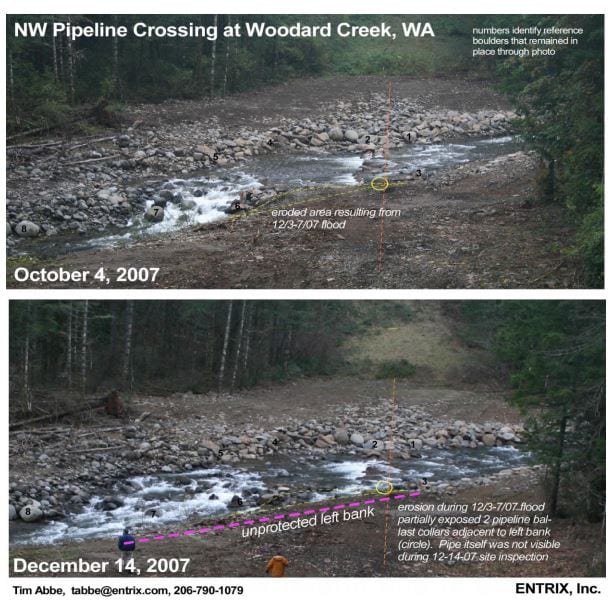Constructing a pipeline in a river or stream is no easy task. Lateral migration can impact a pipeline and cause serious structural damage to the integrity of the line. A whole host of safety and environmental challenges can follow this erosion issue.
Rivers are constantly changing; the riverbed and bank are in motion, long before and after a pipeline is put in place. Removing the natural covering of vegetation can drastically accelerate erosion and enflame lateral migration. To avoid a pipeline failure, Submar uses several tactics.
Take the lateral migration caused by a meandering stream in Iowa, for example. Two 26-inch diameter pipelines that cross North Fork Black Hawk Creek became exposed. A pipeline buried in a straight section of a river, like this one, could actually end up in a bend over time because of the natural contours of the waterway.
After studying the natural and historical topography of the stream, Submar graded the project site to create uniform contours as necessary. The Submar mat system, a system of articulating concrete revetment mattresses, was then installed atop each exposed pipeline to armor and protect them from further pipeline exposure or damage. The articulated concrete revetment mats promote the growth of natural plants and trees. Our mats help to mimic the riverbank, which will create stability both immediately and over long periods of time. Because the mat articulates over time and acts as a grade control structure, the hard-armor mat system will hold the current grade and prevent future degradation of the streambed. Grade control structures can provide vertical stability to the local area around the structure and also to the entire channel system.
Three Longitudinal Peaked Stone Toe Protection (LPSTP) systems were installed along the toe of the right-descending bank to protect the toe from erosive scour and prevent further pipeline exposure.
To learn more about how we offer solutions on lateral migration, see our projects page.


